I remember the first time I took my Polaris Ranger 1000 out for a long weekend of off-roading with friends. Everything was going great until I noticed a strange rattling noise coming from the clutch. At first, I brushed it off, thinking it was just part of the rugged experience. But soon, that minor noise became a major issue.
It wasn’t long before I found myself on the side of the trail, tools in hand, trying to figure out what went wrong. That’s when I realized – even the most dependable machines can have their off days. If you’ve been there, you know the frustration. Let’s break down some of these common problems of Polaris Ranger 1000 and how to fix them.
The most common Polaris Ranger 1000 problems are shifting issues, starting problems, clutch issues, rear differential problems, electrical problems, dust accumulation, engine overheating, suspension problems, fuel pump issues and steering problems.
Polaris Ranger 1000 problems and solutions
Now we are going to explore the most common problems of Polaris Ranger 1000 that you might face on offroading.
1. Polaris Ranger 1000 Shifting Problems
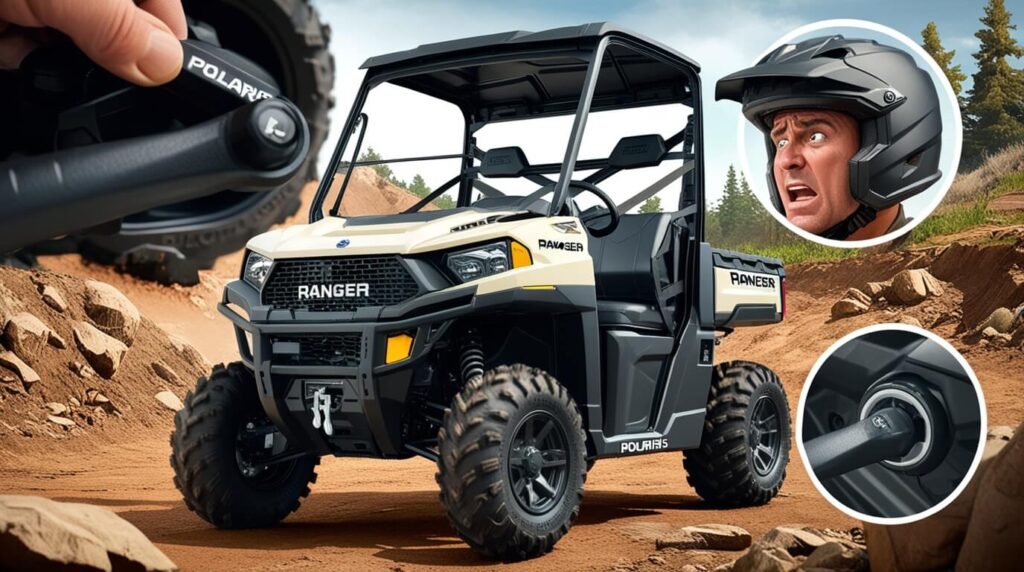
Shifting issues in the Polaris Ranger 1000 UTV can often stem from several underlying causes.
One prominent reason is the presence of low or contaminated transmission fluid, which can lead to inadequate lubrication and gear engagement.
Additionally, worn-out shift cables can hinder smooth operation. Mechanical components, such as the transmission itself or the clutch, may also be malfunctioning, causing these persistent issues.
Symptoms to Watch Out For
Recognizing the symptoms of shifting problems early can save you from more significant repairs later on.
Common signs include difficulty shifting gears, unusual noises during shifts, or the gears grinding rather than engaging smoothly.
If you find that your Ranger 1000 hesitates when shifting or refuses to go into gear at all, it’s essential to address these problems promptly.
Solutions
To resolve shifting problems, start by checking the transmission fluid level and quality, replacing it if necessary. If shift cables are damaged, replacing them can restore proper functionality.
In cases of internal transmission issues, consulting a professional mechanic may be required, as they can diagnose and repair more complex problems. By taking timely action, you can ensure your Polaris Ranger 1000 continues to perform at its best.
2. Starting Problems
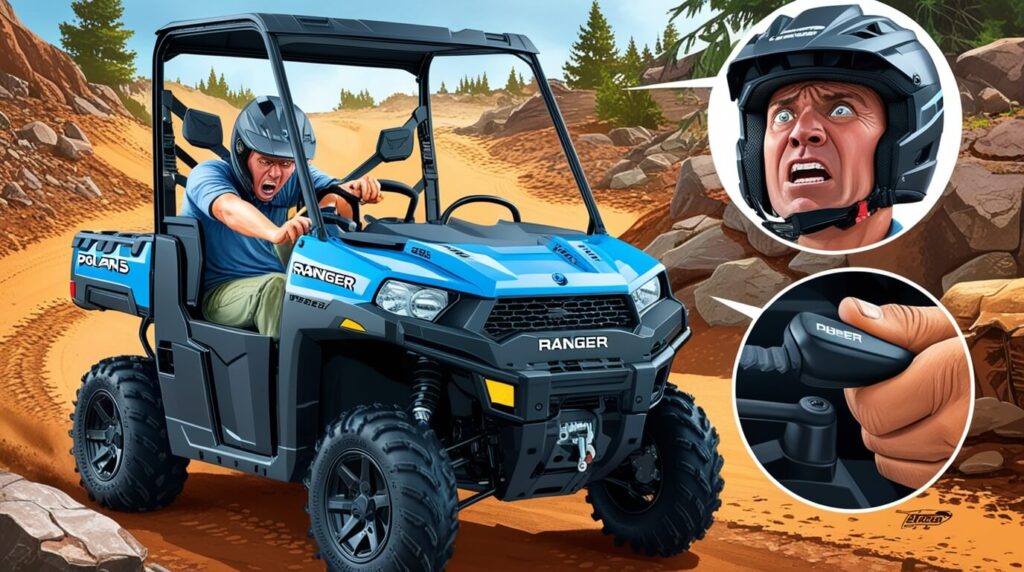
It can be frustrating when your Ranger won’t start. Common culprits for starting issues include a drained battery, poor fuel quality, or a malfunctioning ignition switch.
In some cases, electrical connections may be loose or corroded, preventing the necessary power from reaching the starter. Being aware of these issues can help diagnose the problem quickly and effectively.
Also explore the Polaris 900 xp Ranger Problems
Identifying Symptoms
Before rushing to fix your Ranger 1000, it’s essential to identify accompanying symptoms. Do you hear a clicking sound when trying to start? This might indicate a weak battery.
If the engine cranks slowly or not at all, your battery could be dead or the starter might be faulty. Pay attention to warning lights on your dashboard as they can provide clues about what’s going wrong.
Solutions
To address the starting problems, start with checking the battery. Ensure it’s charged and the terminals are clean and securely connected.
If fuel is the issue, replace it with fresh, quality fuel. If the ignition switch or starter motor appears to be the problem, replacements may be necessary.
Always consider consulting with a professional if you’re unsure, as they can provide expert advice tailored to your situation.
Taking these steps can get your Polaris Ranger 1000 back on the road in no time!
3. Polaris Ranger 1000 Clutch Problems
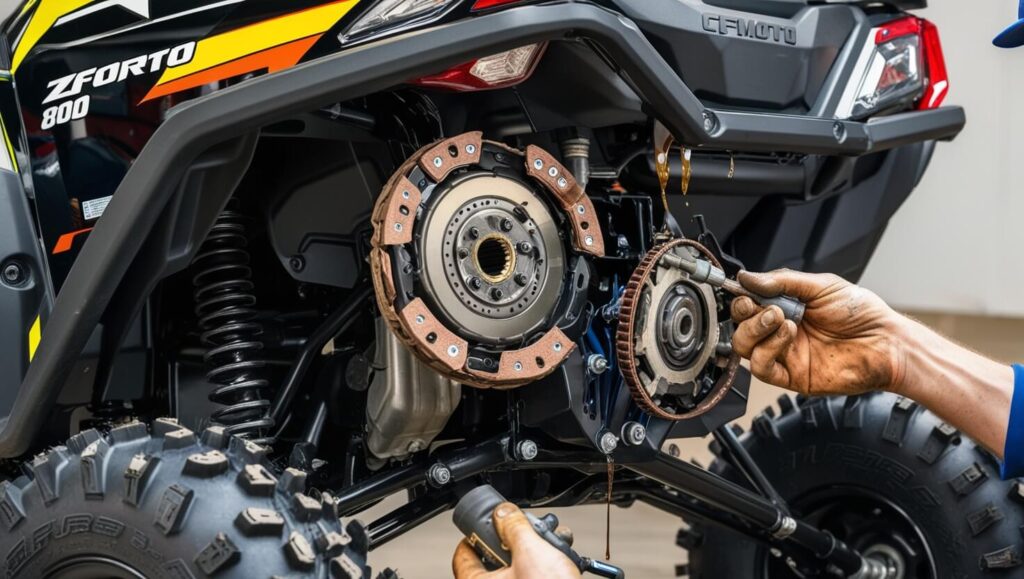
First, let’s talk about the root causes. One major issue often stems from poor maintenance. If the clutch system isn’t regularly serviced, dust and debris can accumulate, leading to wear and tear.
Additionally, improper belt tension can cause slippage, which affects performance. Lastly, overheating can occur from heavy loads or extended use, resulting in potential clutch damage.
Symptoms to Look Out For
Being alert to warning signs can save you time and money. Usually, you’ll notice reduced acceleration or a burning smell, indicating that the clutch might be slipping.
Other symptoms include difficulty shifting gears and unresponsive throttle. If you experience any of these signs, it’s crucial to diagnose the issue before it escalates.
Solutions
Addressing these clutch issues doesn’t have to be intimidating. Start with a thorough inspection to clean any debris and check the belt’s tension. If maintenance doesn’t resolve the problem, you may need to replace the clutch or belt altogether.
Remember, regular check-ups can prevent future headaches. If in doubt, consult a professional for insight and assistance.
4. Rear Differential Problems
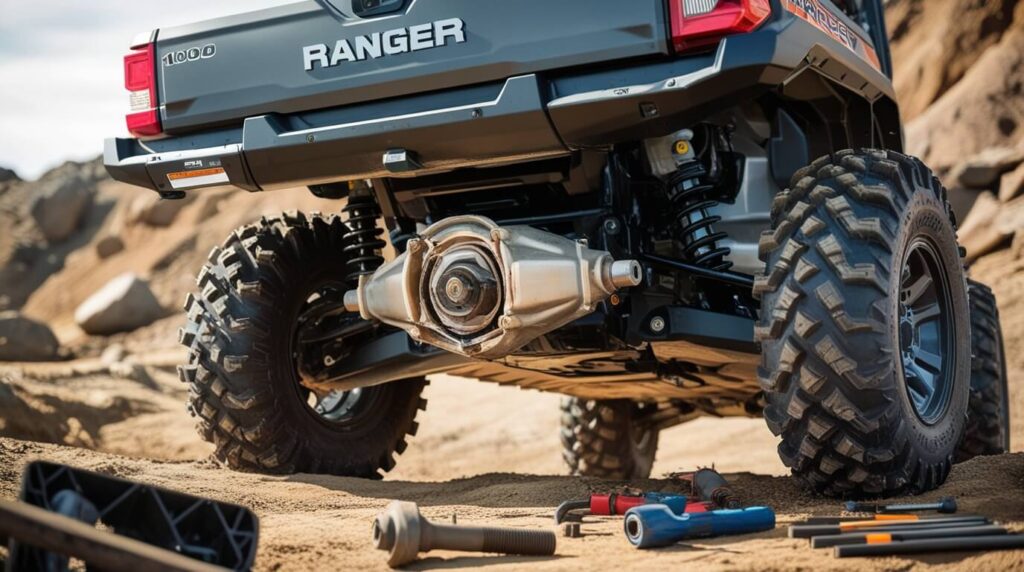
As a proud owner of a Polaris Ranger 1000, I understand how vital it is to maintain every part of our vehicles, especially the rear differential.
The rear differential plays a crucial role in managing the power from the engine to the rear wheels. Sometimes, we may experience issues that can hinder performance.
Common symptoms may include unusual noises, difficulty in turning, or a noticeable loss of acceleration. These symptoms can be alarming, but understanding them is key to addressing the problem.
Common Causes of Differential Issues
There are several factors that can lead to rear differential problems. Factors such as wear and tear, improper lubrication, or a lack of regular maintenance can create significant issues.
Sometimes, driving on rough terrains or exposing your Polaris Ranger to extreme conditions can exacerbate these issues.
Additionally, if the differential fluid is contaminated or low, you might notice problems escalating. It’s crucial to pay attention to these underlying causes to prevent further damage.
Solutions
Fixing rear differential problems may seem daunting, but it can be manageable. If you notice symptoms of a failing differential, the first step is to check the fluid levels and condition. If the fluid appears dirty or low, consider changing it to prevent further issues.
For more severe problems, consulting a professional mechanic or a Polaris technician is highly recommended.
Regular maintenance including lubrication checks can help catch potential issues early on and keep your Ranger running smoothly. Remember, it’s always better to address problems early rather than wait for them to escalate.
5. Electrical Problems
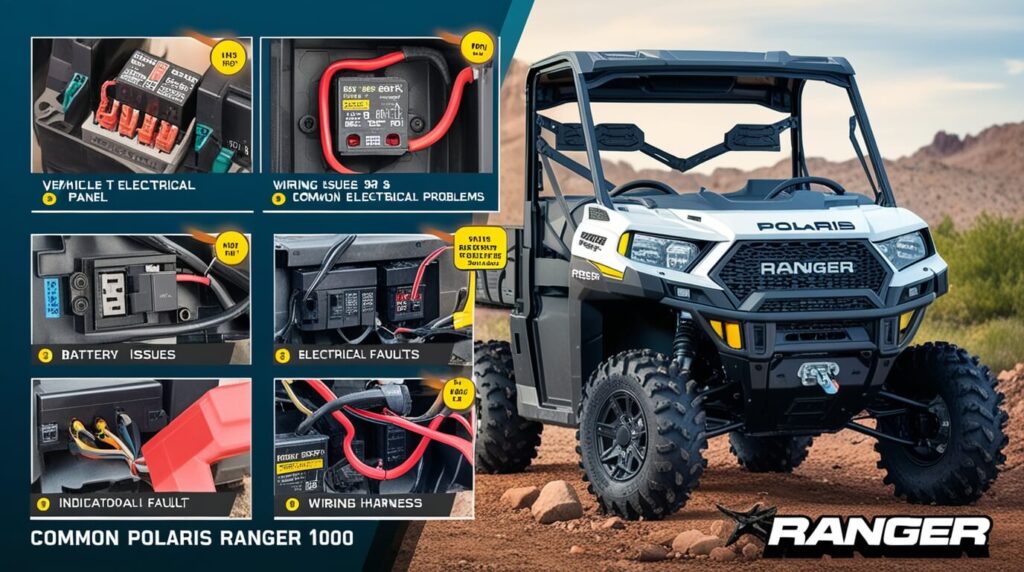
Electrical problems in the Polaris Ranger 1000 can stem from various sources. The most frequent cause is a faulty battery or alternator. A weak battery can lead to insufficient voltage, causing the vehicle to malfunction.
Additionally, corroded connections or damaged wires can disrupt the electrical flow. Always check the battery terminals and ensure connections are clean and tight.
Identifying the Symptoms
Recognizing the symptoms early can save you time and money. Common signs include difficulty starting the engine, flickering lights, and unusual noises from the electrical components.
If instruments like the speedometer or fuel gauge are not functioning properly, these issues may also hint at underlying electrical problems. If you’ve noticed any of these symptoms, it’s crucial to investigate further.
Solutions
For those experiencing electrical difficulties, start by inspecting the battery and connections. Replace any corroded cables and consider testing the alternator’s output. If problems persist, seeking professional help should be your next step.
Regular maintenance checks will also keep your vehicle in optimum condition and help prevent future issues. Understanding these aspects of your Polaris Ranger 1000 can turn a daunting problem into a manageable one.
6. Dust Accumulation
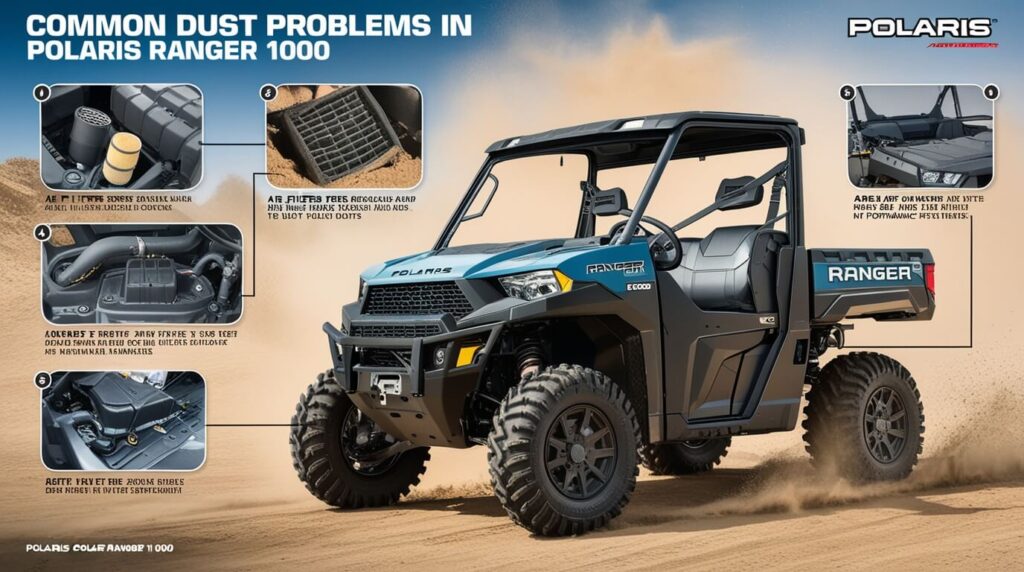
The Polaris Ranger 1000 is designed for rugged terrain, which unfortunately means that it often encounters dusty environments.
Dust can enter through various gaps around doors, windows, and the cargo area. Moreover, the vehicle’s high-speed operations can stir up dust from the ground, further exacerbating the problem.
Symptoms You Might Experience
When dealing with dust issues in your Ranger, you may notice several symptoms. Common indicators include a fine layer of dust accumulating on the interior surfaces, reduced visibility from dusty windows, and even allergy flare-ups if you’re sensitive to dust.
You might also find that the engine components can become less efficient over time due to dust blockage, which can lead to increased maintenance costs.
Solutions
There are practical solutions to reduce dust problems in your Polaris Ranger 1000. Regularly cleaning the vehicle’s interior and exterior is a must. Using weatherstripping on doors and windows can help to seal off gaps.
Additionally, consider using an air filter designed for off-road conditions, as it will help trap dust particles effectively. Lastly, avoid driving in excessively dusty conditions whenever possible to minimize exposure.
7. Polaris Ranger 1000 Overheating Problems
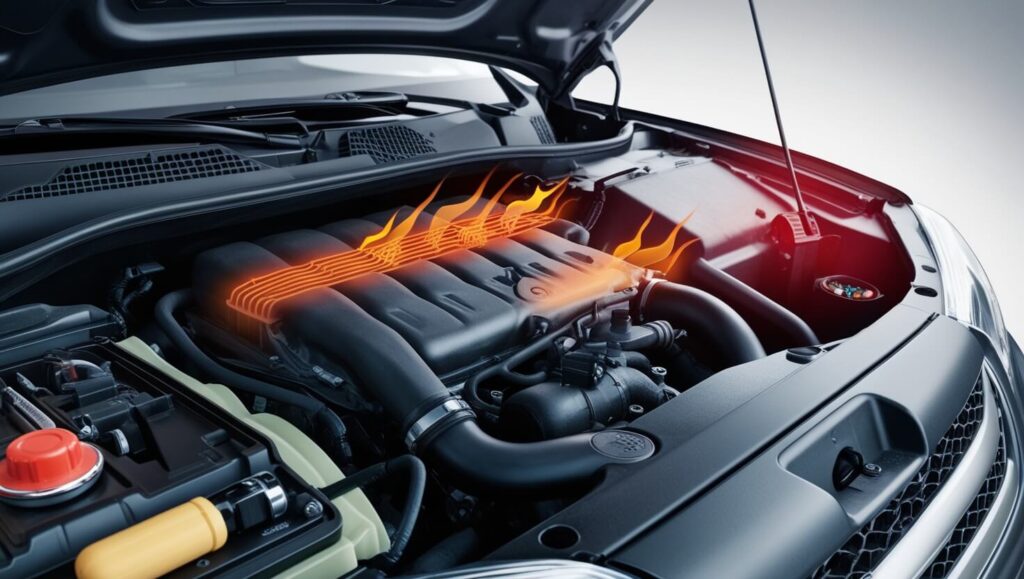
There are several reasons why your Polaris Ranger 1000 might experience engine overheating. One common culprit is a coolant leak, which can lead to insufficient coolant levels in the engine.
Additionally, a faulty thermostat can prevent proper coolant circulation, causing the engine to overheat.
Other factors include clogged radiator fins, which hinder airflow, and working the engine too hard in demanding conditions, such as steep terrain or heavy towing. Understanding these causes helps you identify the problem early on.
Recognizing Symptoms and Finding Solutions
Symptoms of engine overheating include a rising temperature gauge, steam coming from under the hood, and a noticeable loss of power. If you notice any of these signs, it’s crucial to act quickly.
First, safely pull over and allow the engine to cool down. Checking coolant levels and inspecting for leaks can offer immediate insight into the issue.
In the long run, regular maintenance such as flushing the coolant system, replacing the thermostat, and cleaning the radiator will keep your Polaris Ranger 1000 running smoothly. Remember, being proactive is key to avoiding more severe problems down the road.
8. Suspension Problems
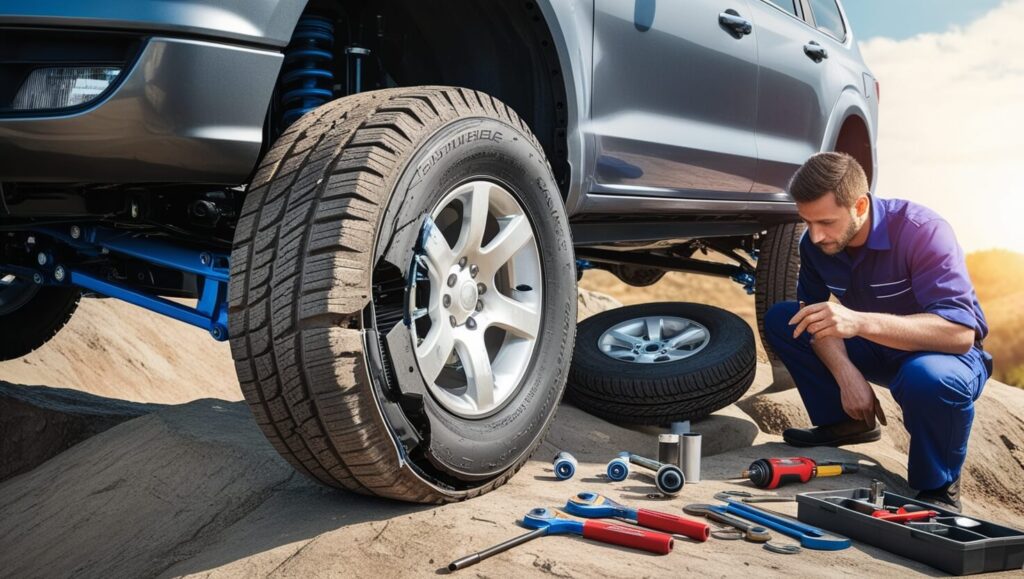
One prevalent cause of suspension issues in the Polaris Ranger 1000 is the wear and tear of components over time. Factors like rough terrain, heavy loads, and inadequate maintenance can exacerbate this wear.
Additionally, if the shocks are not properly adjusted or are of poor quality, they may lead to a reduced performance of the suspension system. It is essential to regularly inspect and service the suspension components to prevent these problems from escalating.
Symptoms and Solutions to Consider
Signs that your Ranger’s suspension may be failing include a rough ride, unusual noises, or excessive body roll during turns. If you notice any of these symptoms, addressing them promptly is important.
First, it’s wise to check the shock absorbers for leaks, as worn shocks can fail to absorb bumps effectively. If you find any issues, replacing the shocks or adjusting their settings can significantly enhance ride quality.
Regular maintenance, such as lubrication of joints, can also help extend the life of the suspension system. By taking care of these problems early, you can enjoy a smoother and more efficient ride.
9. Fuel Pump Issues
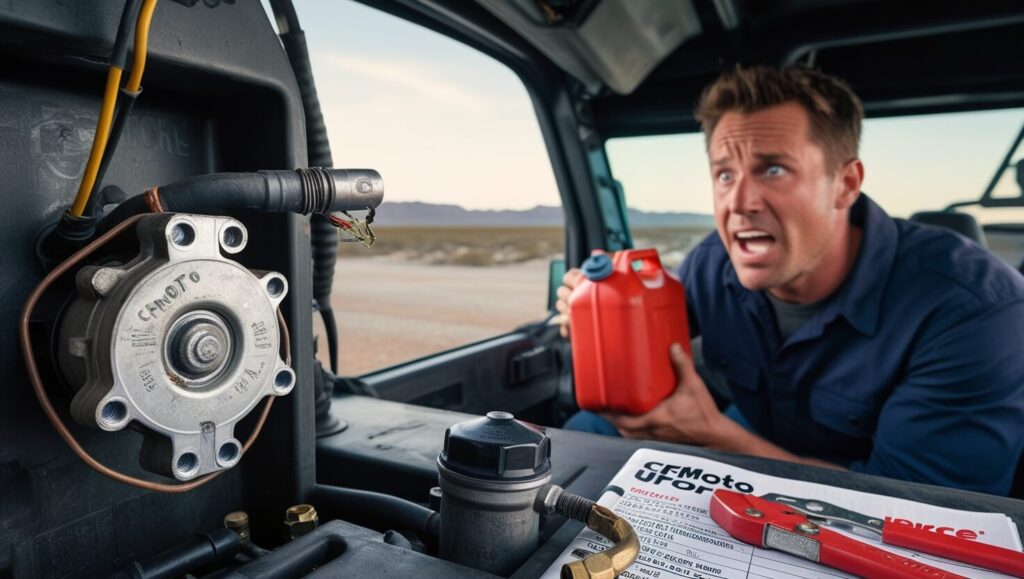
When it comes to the Polaris Ranger 1000, one of the main concerns I’ve encountered is fuel pump problems. These issues can stem from various reasons, such as a clogged fuel filter, faulty electrical connections, or even low fuel levels.
A clogged fuel filter can restrict fuel flow, causing the pump to work harder and eventually lead to failure. Additionally, if the electrical connections are damaged or corroded, the pump may not receive the power it needs to function properly.
Identifying the Symptoms
As a Ranger owner, recognizing the symptoms of fuel pump issues can save you from a lot of trouble. Common signs include engine sputtering, difficulty starting the engine, or a complete engine shutdown.
You might also notice a decrease in power or strange noises coming from the fuel tank area. If you experience any of these symptoms, it might be time to inspect your fuel pump for possible malfunctions.
Solutions
Fortunately, there are several solutions for addressing fuel pump problems. Firstly, conducting regular maintenance checks, such as replacing the fuel filter every 10,000 miles, can prevent many issues.
If you suspect a problem with your fuel pump, testing the electrical connections or even replacing the fuel pump itself may be necessary.
I recommend referring to the owner’s manual or consulting a professional mechanic who specializes in Polaris vehicles to ensure you’re tackling the issue properly. Remember, identifying and resolving these problems early can significantly extend the lifespan of your Ranger.
10. Steering Issues
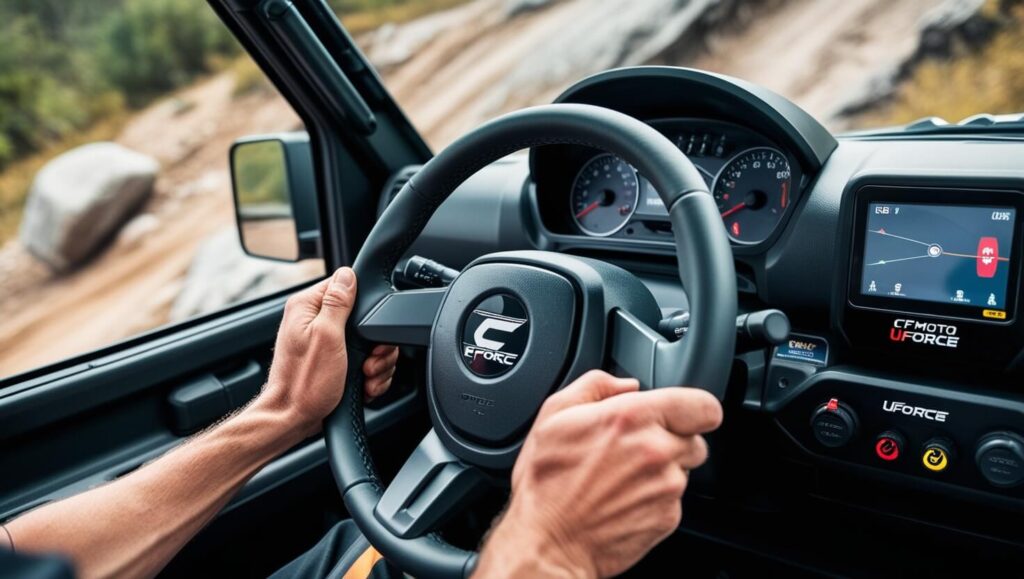
One primary cause of steering problems in the Polaris Ranger 1000 is a damaged or worn-out steering rack. Over time, wear and tear can lead to play in the steering system, making it difficult to control the vehicle.
Additionally, low power steering fluid can cause hard steering, making the vehicle less responsive. Other factors include misalignment of the wheels or issues with the tie rods, which can cause uneven wear and instability in steering.
Identifying Symptoms
Recognizing the symptoms of steering problems is crucial for timely intervention. If you notice your Ranger pulling to one side, or if the steering wheel feels loose or unresponsive, these are indicators of a potential issue.
Other symptoms might include unusual noises when turning the steering wheel or a grinding feeling during operation. If you experience any of these problems, further investigation is necessary to prevent worsening conditions.
Solutions
Addressing steering issues often requires a multifaceted approach. Initially, checking the power steering fluid level and topping it off can resolve hard steering. It’s also vital to inspect the steering rack for any damage; replacing it may be necessary for optimal performance.
If wheel alignment is off, taking your Ranger to a certified mechanic for proper adjustment can greatly enhance handling. Regular maintenance checks will help you avoid future problems, ensuring safe riding experiences.
Conclusion
Owning a Polaris Ranger 1000 is all about adventure and tackling rugged terrains, but keeping it in top shape is vital to avoid unexpected problems. Regular maintenance and upgrading key components, like the clutch and suspension, can make all the difference. Staying on top of these issues ensures your Ranger delivers the performance you expect, letting you enjoy your rides without interruption.
FAQs
What is the recall on Polaris Ranger 1000?
The Polaris Ranger 1000 has had recalls related to fire hazards due to overheating components, with some models requiring repairs for the fuel system and electrical wiring.
How long does a Polaris Ranger engine last?
A Polaris Ranger engine typically lasts between 7,000 to 10,000 miles with proper maintenance, though heavy use or lack of care can shorten this lifespan.
Are Polaris Rangers reliable?
Polaris Rangers are generally reliable, especially with regular maintenance, though some users report issues with clutch systems, electrical components, and suspension over time.